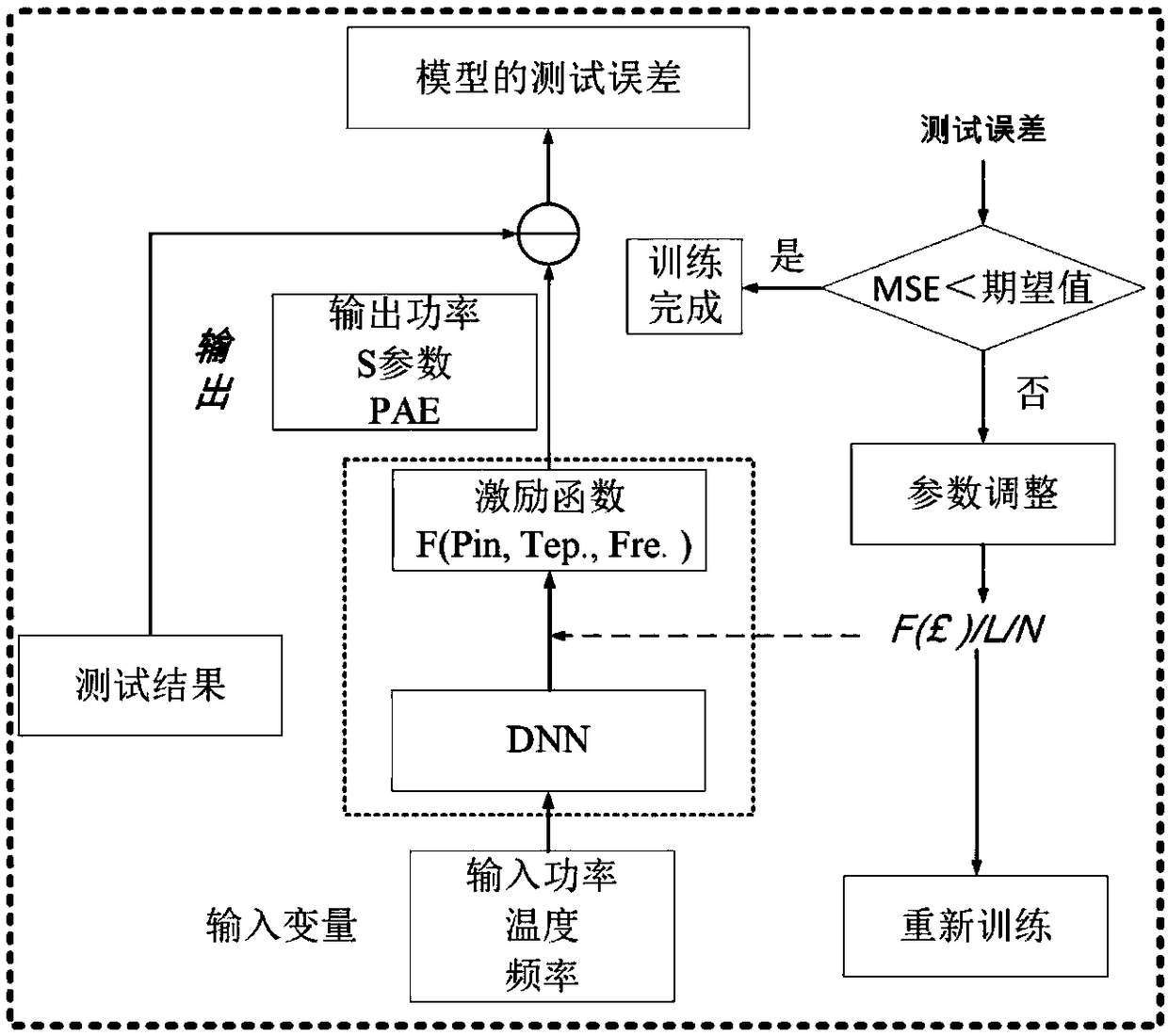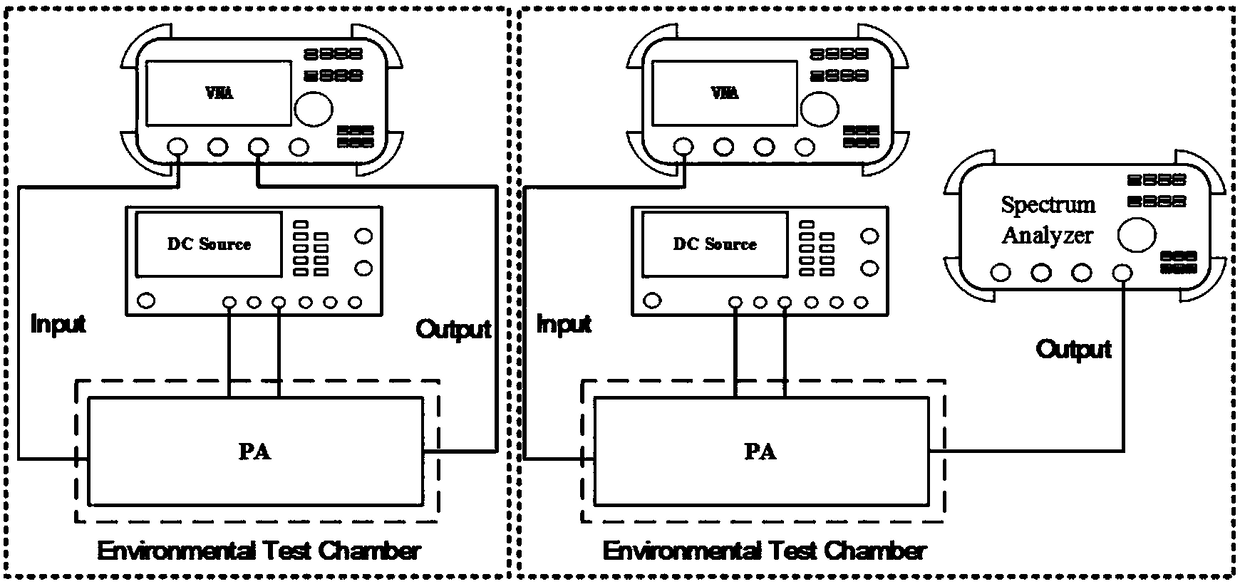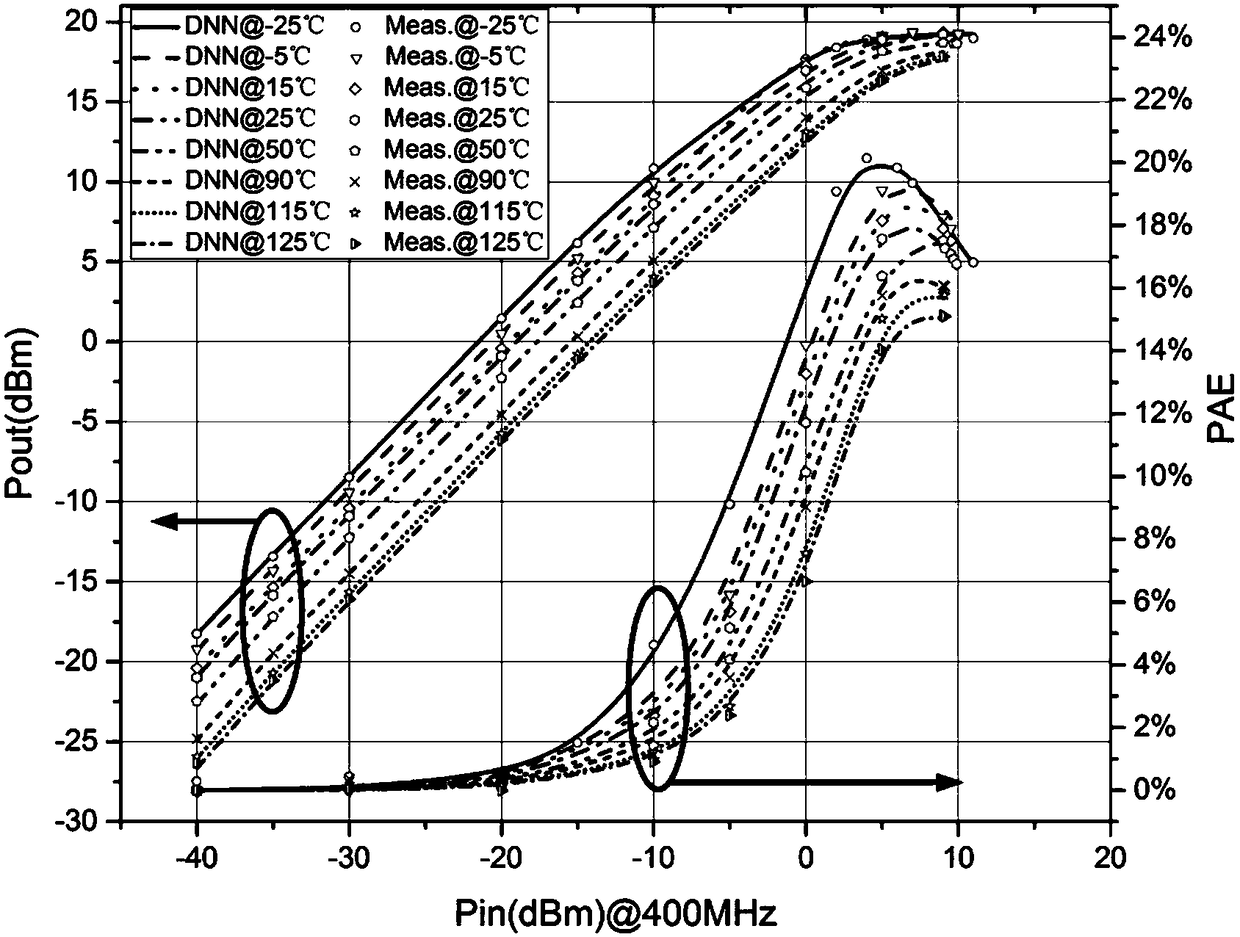DNN-based radio frequency power amplifier temperature characteristic modeling method
A technology of temperature characteristics and modeling methods, applied in neural learning methods, computer simulation, CAD circuit design, etc., can solve problems such as abnormal time-consuming, and achieve the effect of reducing risks, strengthening practical guiding significance, and strong abstract expression ability.
- Summary
- Abstract
- Description
- Claims
- Application Information
AI Technical Summary
Problems solved by technology
Method used
Image
Examples
Embodiment
[0030] Example: 0.1–1.2GHz CMOS RF Power Amplifier
[0031] Step 1. Use the environmental test box to carry out the test. The test temperature range is -25 to 125°C, the power supply voltage is 3.3V, and the scanning frequency is 100MHz to 1.2GHz. Use a vector network analyzer and a spectrum analyzer to record the measured data. The test circuit diagram is as follows: figure 2 shown.
[0032] According to the obtained measured data of the temperature characteristics of the RF power amplifier, the data are divided into two groups, which are respectively used as the training data and test data of the DNN model.
[0033] Step two, determine the input variables (input power, frequency and temperature) and output variables (output power, S parameters and PAE) of the DNN model.
[0034] Step 3, import the selected training data into the DNN model to train the DNN model.
[0035] Step 4, import the selected test data into the trained DNN model, compare the output results of the DN...
PUM
 Login to View More
Login to View More Abstract
Description
Claims
Application Information
 Login to View More
Login to View More - R&D
- Intellectual Property
- Life Sciences
- Materials
- Tech Scout
- Unparalleled Data Quality
- Higher Quality Content
- 60% Fewer Hallucinations
Browse by: Latest US Patents, China's latest patents, Technical Efficacy Thesaurus, Application Domain, Technology Topic, Popular Technical Reports.
© 2025 PatSnap. All rights reserved.Legal|Privacy policy|Modern Slavery Act Transparency Statement|Sitemap|About US| Contact US: help@patsnap.com



